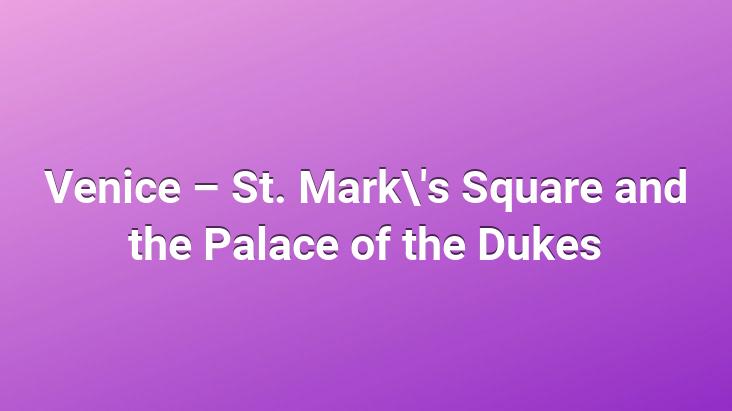The first settlement in
Venice began in 455 on the site of the present Rialto Bridge. The first construction in the city, which was built on a half-moon shaped lagoon, consisted of wooden huts built on wooden piles.. When the city started to become a trade center in 1000-1100, the buildings started to become concrete.
Venice developed its trade with the east, especially with the Eastern Roman Empire.. Venetians4. They led the Crusades. When Constantinople, the capital city of the Eastern Roman Empire, that is, Istanbul, was sacked, they brought 4 bronze horse statues called “The Four Horsemen of the Apocalypse” from the Constantinople hippodrome to Venice. They placed these horse sculptures in the gallery located on the upper floor of St. Mark’s Basilica in St. Mark’s Square in 1204.
Also 4. Ceramics, silver and glass objects, jewelery and icons from Constantinople during the Crusade are also exhibited in the museums here.
There are 2 ways to reach Venice; one of the Vaperottos and the other 4 km railway connecting Venice to the mainland. However, this railway is mostly used for transportation.
We reach Venice with Vaperottos and approach the coast.
Venice consists of 118 islands, 177 canals and 420 bridges. The largest island is the island of San Marco.. We are landing on the island of San Marco.
The doors of the houses in Venice open to the canals.. The only transportation in the city is small motorbikes and gondolas.. Venice is fully protected and it is forbidden to hammer a single nail into the houses in the area without permission.
Most of those working in Venice live on the mainland.. They leave in the morning and return to the mainland in the evening.. In fact, house and hotel prices are very high in Venice.. For this reason, most of the tourists stay in the Mestre region. Currently Venice’s biggest income is tourism.. During the peak season, the number of daily tourists reaches 25,000 people. Venice is under threat of sinking and is under the protection of Unesco.
In 1992, the Italian government took control of the tides. built movable barriers to the sea for the purpose of. However, the tides were important in terms of cleaning the channels and creating circulation.. That’s why the people didn’t want it, so the construction of the barriers was stopped in 1998.. However, it was rebuilt in 2001.. Construction was still ongoing when we went in 2009.
Today, Venice has three biggest problems; 1) A solution to the dwindling young population
2) Controlling the pollution in the canals
3) Finding a solution to the floods.
Sometimes the waters get too high during the tides and St. Mark’s Square is flooded was staying. For this reason, there are holes in the granite floors in San Marco Square for evacuation purposes.
Everywhere we visit, we also see piles of 40 cm high wooden bed frames with iron legs, stacked on top of each other.. When the water rose, they made paths to walk to the streets. Ducal Palace (Plazzo Ducale) was the center of the empire for 900 years. The council and courtrooms here were among the places frequented by the dukes during the period.. The palace of the dukes was originally built as a Byzantine-style chateau in the 9th century, but was rebuilt 500 years later in the Gothic style.. It is a very magnificent building with plenty of arches, decorated with white and light pink decorations on the outside.. The interior contains the council’s meeting rooms, the dukes’ private chambers and courtrooms.. Today, it hosts many exhibitions.
The Dukes’ Palace is connected to the prison by a baroque-style stone bridge built in 1603.. This bridge, which is decorated with very detailed embroideries and windows, is called “Bridge of Ah’lar”, “Bridge of Last Breath” and “Bridge of Sigh”.. Because the windows here are the last place where the prisoners sentenced to death see the world.
We come to Piazetta San Marco, the entrance of St. Mark’s Square, passing through the Palace of the Dukes, the Bridge of Sighs and the prison.. Here we see 2 granite columns. On one of these columns is the figure of “Winged Lion“, the symbol of Venice.. This figure symbolizes the power and freedom of Venice.. On the other column is the statue of Venice’s patron saint, Saint Theodorus.. Criminals, 15. and 18. YY. He was executed between these two columns.
When we continue from the entrance, we reach the bell tower.
The so-called “Campanile di San Marco” We come to the bell tower. With a height of 100 meters, this bell tower is the highest point in Venice.. However, the original tower was demolished in 1902 and rebuilt in 1912.. It is very enjoyable to go up this observation tower and watch Venice.
There are nice hotels in Venice where you can stay.. Palace Bonvecchiati hotel is one of them.. The hotel is located 200-250 meters from St. Mark’s Square.. If you want a quality and affordable accommodation, it is one of the hotels you should choose.. Another hotel close to St. Mark’s Square is Hotel Danieli.. This hotel is on 14, 19 and 20. It consists of 3 separate buildings connected by covered bridges dating back to the 19th century.. In fact, it can be said to contain a history on its own.
If you want to stay close to the Grand Canal, you can also consider Pesaro Palace.. 15. Pesaro, which is among another special hotels in a building dating back to the 19th century, is also very close to St. Mark’s Square and Rialto Bridge.. Apart from these hotels, Palazzetto Pisani and Alla Vite Dorata hotels can also be suitable choices for low-budget people.. Apart from these hotels, you can browse more Venice hotels by going to booking.com here.







